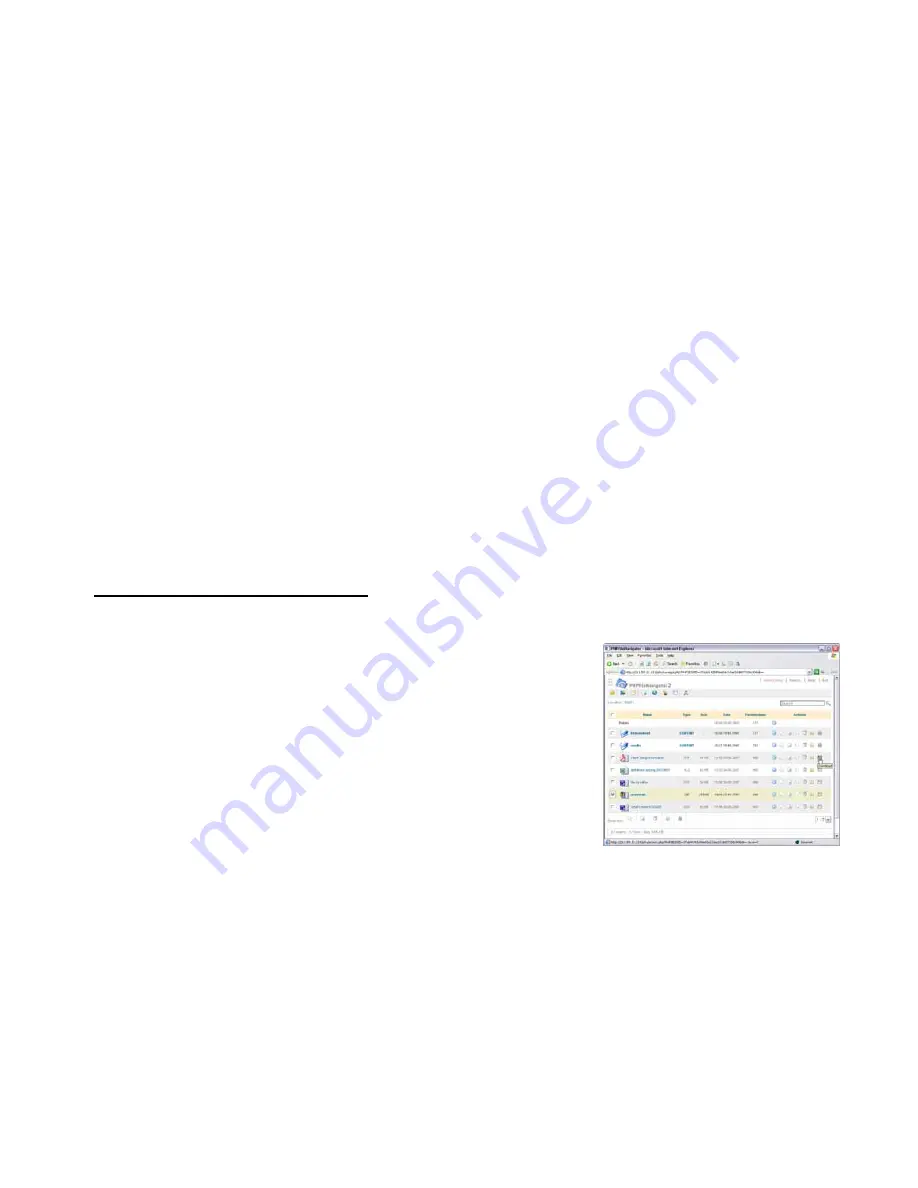
Square
One
User’s
Guide
Page
43
When
you
log
in
to
your
Personal
Server’s
FTP
or
SFTP
service,
the
active
directory
—the
directory
you
are
“in”—is
initially
the
private
folder
belonging
to
the
user
you
logged
in
as.
(In
the
admin
user’s
case,
this
is
the
admin
folder.)
From
this
folder,
you
can
go
“up”
to
its
parent
directory,
ide3
,
which
contains
all
the
private
and
shared
folders
on
the
Personal
Server’s
internal
hard
drive.
If
you
go
up
one
more
level,
to
the
ftp
root
,
you
will
see,
in
addition
to
ide3
,
folders
representing
any
external
storage
devices
that
are
connected
to
the
server,
such
as
usb1
.
(When
no
external
devices
are
connected,
only
ide3
will
be
visible.)
If
you
log
in
with
a
user
account
that
has
no
private
folder,
your
initial
active
directory
will
be
the
ftp
root
(/).
Technical
note
:
The
ftp
root
corresponds
to
the
directory
/mnt
on
the
internal
hard
drive,
which
contains
the
mount
points
of
all
connected
storage
devices.
You
cannot
access
the
true
system
root
or
any
of
its
subdirectories,
except
for
/mnt
,
using
FTP
or
SFTP,
although
you
can
access
these
directories
using
the
server’s
command
line
interface
through
telnet
or
SSH—see
Accessing
the
command
line
interface
.
Accessing
external
storage
devices
through
FTP
or
SFTP
To
access
a
connected
external
storage
device
through
FTP
or
SFTP,
log
in
as
any
user,
and
from
your
private
folder,
go
“up”
twice
to
the
ftp
root.
Then
double
‐
click
the
folder
representing
the
desired
external
drive.
Accessing
files
remotely
using
a
web
browser
One
of
the
web
applications
preinstalled
on
your
Personal
Server
is
a
web
‐
based
file
storage
application
called
PHPfileNavigator.
You
can
use
this
application
to
work
with
files
in
the
Personal
Server’s
public
shared
folder
(
\\squareone\public
)
from
any
computer
with
an
Internet
connection.
To
use
PHPfileNavigator,
go
to
http://
ip_address
/pfn/
(where
ip_address
is
your
Personal
Server’s
WAN
IP
address)
and
log
in
with
username
“admin”,
password
“squareone”.
An
example
directory
listing
in
PHPfileNavigator
is
shown
in
Figure
24.
Using
PHPfileNavigator,
you
can:
Download
files
from,
and
upload
them
to,
your
Personal
Server.
Copy
or
move
files
between
folders
on
the
server.
Delete
files
on
the
server.
Figure
24






























